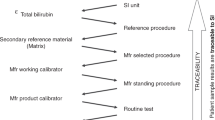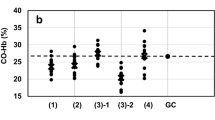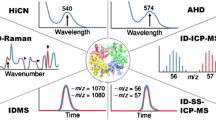Abstract
The effect of haematocrit and β-carotene levels on the serum total bilirubin measurement in two analytical methods was studied as an example of the impact of practical analytical quality in medical decision making. The precision characteristics of the two methods were very similar. Based upon the significant difference in the correlation coefficient in a method comparison study before and after 20% trimming of the data, an interference effect study was performed. Haemoglobin (expressed as haematocrit) and β-carotene were the substances studied to explain the observed differences. The bilirubin test results from the Wako bilirubinometer were easily affected (n=19;X(S): 13.83±2.43;t=–6.17;P=0.000) and more elevated than in the Vitros dry chemistry systems (n=18;X(S): 12.72±2.21;t=–2.48;P=0.017), due to the presence of β-carotene (>200 μg/dl).
Similar content being viewed by others
Author information
Authors and Affiliations
Additional information
Received: 20 April 1999 / Accepted: 24 September 1999
Rights and permissions
About this article
Cite this article
Aslan, D., Kuralay, F., Tanyalcin, T. et al. A practical analytical quality report on the effect of carotenemia on neonatal bilirubin levels. Accred Qual Assur 5, 54–57 (2000). https://doi.org/10.1007/s007690050011
Issue Date:
DOI: https://doi.org/10.1007/s007690050011




